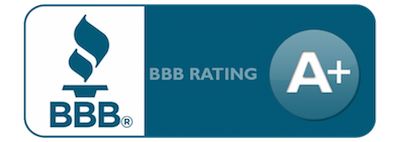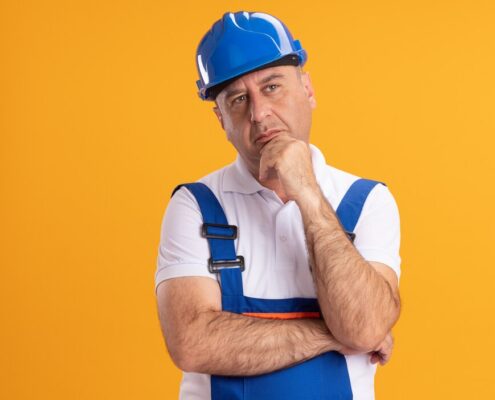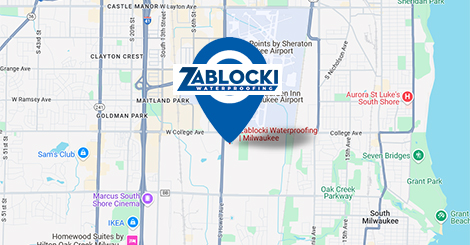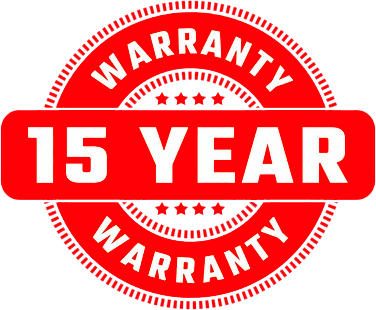Basement waterproofing is a crucial aspect of maintaining a dry and safe home. A wet or damp basement can lead to an array of problems, from mold growth to structural damage. This makes implementing an effective waterproofing system crucial.
If you live in Wisconsin, you are no stranger to the heavy rains and snow that can cause basement flooding. That’s why choosing the right basement waterproofing system for your home is a crucial decision.
This article will guide you through the best basement waterproofing systems available today, comparing their features, benefits, and drawbacks. Whether you’re dealing with occasional leaks or chronic dampness, you’ll find the perfect solution to keep your basement dry and your home safe.
Summary:
- Basement Waterproofing 101
- Interior Waterproofing Pros and Cons
- Exterior Waterproofing Pros and Cons
- Most Common Waterproofing Systems in Wisconsin
- Milwaukee Basement Waterproofing
1. Basement Waterproofing 101
Before we dive into comparing different basement waterproofing systems, it’s essential to understand the basics of basement waterproofing. This knowledge will help you better grasp the features and benefits of each system. Here are a few things you should know:
- Water can enter your basement through various ways such as cracks, gaps, and porous walls.
- Water pressure can build up on the outside of your basement, causing leaks and flooding.
- Traditional waterproofing methods such as exterior excavation and drainage systems may not be suitable for every home.
- Effective basement waterproofing should address both interior and exterior sources of water.
Comparing Options: Interior vs. Exterior Waterproofing
Now, let’s move on to comparing the two most popular types of basement waterproofing systems. When it comes to basement waterproofing, there are two main options available: interior and exterior waterproofing.
2. Interior Waterproofing
Interior waterproofing is often the go-to solution for many homeowners when tackling basement moisture problems. This method primarily focuses on managing water once it has made its way into your home. It usually involves the use of sealants, coatings, and potentially even a sump pump to remove any water that manages to get inside.
Sealants can help close off cracks and other openings, reducing dampness in the walls and floors. Coatings, on the other hand, are applied to the surface of walls and floors, creating a waterproof barrier.
Pros:
- Cost-Effective: Interior waterproofing is generally less expensive than exterior methods, making it a more budget-friendly choice for many homeowners.
- Less Disruptive: It involves minimal digging and disruption to the home’s exterior, which can be a significant advantage for properties with established landscaping or hardscaping.
- Manages Water Intrusion: It effectively manages water that has already entered the basement, typically through the use of sealants, coatings, and sump pumps.
Cons:
- Doesn’t Address Root Cause: This method doesn’t prevent water from entering the basement in the first place, but rather deals with water once it’s inside.
- Not As Long-Lasting: Compared to exterior waterproofing, interior waterproofing is generally considered less effective and durable in the long term.
- Potential for Humidity Problems: There’s a risk that interior drains could allow water and humidity into the living space.
3. Exterior Waterproofing
Exterior waterproofing, also known as positive side waterproofing, is a comprehensive solution that addresses moisture issues from the outside of your home. It involves excavating around the house down to the foundation level and applying a waterproof coating or membrane to the exterior walls. This barrier prevents water from making its way into the basement in the first place.
Additionally, a drainage system is often installed alongside the foundation to redirect water away from the home. While this method is typically more costly and invasive than interior solutions, it offers a more durable and long-term resolution to water intrusion problems by tackling the issue at its source. Exterior waterproofing is especially beneficial for homes located in areas with high water tables or prone to heavy rainfall.
Pros:
- Effective: Exterior waterproofing is considered more effective and long-lasting, as it blocks water from entering the basement in the first place.
- Prevents Structural Damage: By keeping water out entirely, this method can help prevent structural damage caused by water seepage
- Addresses High Water Tables: It’s particularly beneficial for homes located in areas with high water tables or prone to heavy rainfall.
Cons:
- Cost: It is generally more expensive than interior methods due to the extensive labor and materials involved.
- Disruptive: The process involves excavating around the home, which can disrupt lawns, gardens, and any other landscaping features.
- Time-Consuming: Due to the excavation and installation processes, exterior waterproofing can be more time-consuming than interior methods.
4. Most Common Waterproofing Systems in Wisconsin
The following basement waterproofing systems are the most common and popular options used by homeowners in Milwaukee:
- Interior Sealants: As mentioned before, sealants are applied to cracks and gaps from inside the basement walls to reduce moisture infiltration.
- Interior Coatings: Similar to sealants, coatings act as a barrier between your basement walls/floors and moisture.
- Sump Pump Systems: Sump pumps are used to collect and remove water that manages to enter the basement.
- Exterior Excavation: This method involves digging around the foundation and applying a waterproof membrane or coating to the exterior walls.
- Exterior Drainage Systems: These systems help divert water away from the home’s foundation, preventing it from entering the basement.
- Crawl Space Encapsulation: For homes with crawl spaces, encapsulation involves sealing off the space from moisture, preventing it from affecting the rest of the home.
- Interior Drainage System: Similar to exterior drainage systems, this method involves installing a drainage system inside the basement to collect and redirect water.
5. Milwaukee Basement Waterproofing
Investing in a reliable basement waterproofing system is crucial for maintaining a dry and safe home. By understanding the basics and comparing different options, you can choose the best solution for your specific needs.
For homeowners in Milwaukee, Zablocki Waterproofing offers a range of basement waterproofing services. Our team of experts will assess your home’s specific needs and recommend the most effective solution to keep your basement dry for years to come. With our high-quality products and professional installation, you can trust us to protect your home from water damage. Contact Zablocki Waterproofing today for a free consultation.
 By Dale Granbois, co-owner of Zablocki Waterproofing
By Dale Granbois, co-owner of Zablocki Waterproofing
Dale Granbois is the proud co-owner of Zablocki Waterproofing, the premier basement waterproofing and foundation repair service provider in Milwaukee. Our team of experienced professionals offer a variety of services from complete basement waterproofing solutions to structural foundation repairs -all designed to keep your home or business safe and dry. Let us save you from expensive headaches caused by water damage and give you peace of mind with a safe and secure property. Contact us today for more information!







